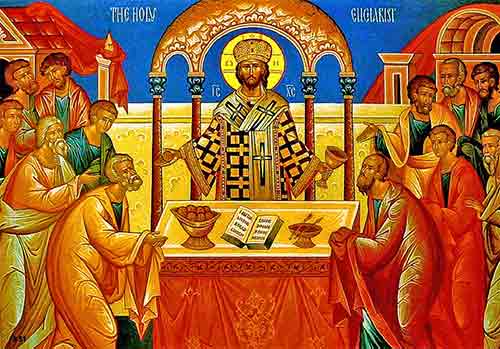
This post follows my reflection on
- the Eucharistic Prayer starting page 420 in A New Zealand Prayer Book He Karakia Mihinare o Aotearoa (NZPB/HKMA)
- the Eucharistic Prayer starting page 436
- the Eucharistic Prayer starting page 467
- the Eucharistic Prayer starting page 485
and their revisions. - the Eucharistic Prayer starting page 512 (a framework for producing your own)
- Alternative Great Thanksgiving E
In reflecting on the quality of a Eucharistic Prayer (a Great Thanksgiving), here are some of the things I’m looking out for:
- Clearly a prayer of thanksgiving – consecrating by the community giving thanks (led by the gathered community’s presider) for the great acts of God
- following the Jewish Berakah structure (Praise – Proclaim – Petition – Praise)
- Easily-remembered, consistent responses and acclamations (so preferably poetic and singable) for the gathered community so that they are not focusing on a book (or a projector screen)
- Inclusive and expansive language
- A prayer that flows well, keeps to a consistent tone, and has a broad enough theology to cover acceptable interpretations
Let’s look at some other Eucharistic Prayer allowed in the Anglican Church in Aotearoa, New Zealand and Polynesia.
An Alternative Form for Ordering the Eucharist
The Form for Ordering the Eucharist for special occasions, introduced in 1984 was seen as not being flexible enough. It was extended to be allowed to be used for any Eucharist – not just special occasions. This (linked) is the result. That still wasn’t deemed flexible enough. An Alternative Form for Ordering the Eucharist was added. This Alternative Form meant that you could use any Eucharistic Prayer authorised anywhere in the Anglican Communion, or produce your own using NZPB/HKMA’s framework (or any of the frameworks authorised anywhere in the Anglican Communion).
In time, General Synod Te Hinota Whanui did attempt to put some of this liturgical toothpaste back into the tube and claw back to only allowing prayers from here – but diocesan synods and hui amorangi, who need to ratify such a change, would have none of that. In the Anglican Church of Or, flexibility is sovereign.
As this series is about encouraging the improving of Great Thanksgiving Prayers, a couple of points:
1. Unless explicitly indicated in the rubrics, we have no allowance to alter words. There is no allowance in our flexibility, for example, to use our own agreed responses in place of the original ones when using Eucharistic Prayers from oversees. We can, for example, use Prayer B from the Church of England’s Common Worship, but we have no flexibility to alter
The Lord be with you
All and also with you.
to our own
The Lord be with you.
Kia noho a Ihowā ki a koutou.
The Lord bless you.
Mā Ihowā koe e manaaki.
Currently, we have no authority to change
The Lord is here.
All His Spirit is with us.
to our own agreed
The Lord is here.
Kei konei te Ariki.
God’s Spirit is with us.
Kei a mātou te Wairua o te Atua.
People do (without any authority) make changes to the Eucharistic Prayer (sometimes producing a disturbing result; at other times improving the original). I think we should have a clear canon that allows some adaptation of texts, encouraging (requiring?) adaptation of international texts (that are allowed here) to have our agreed responses, and limiting the adaptation of agreed texts to what the text clearly intended to communicate.
2. Eucharistic Prayers express central doctrine. In allowing other churches (even other Anglican churches) to decide what we, here, proclaim as doctrine, I think we have ceded our right and obligation to agree what our doctrine is. Far better would have been to allow the construction of Eucharistic Prayers with the following boundaries: that the responses be those in NZPB/HKMA, that the prayer include thanks to God for the work of creation and God’s self revelation, thanks for the salvation of the world through Christ, the Last Supper story in one of the versions from a Eucharistic Prayer in NZPB/HKMA, one of the anamnesis paragraphs from a Eucharistic Prayer in NZPB/HKMA, an epiclesis paragraph from a Eucharistic Prayer in NZPB/HKMA, and conclude with a doxology, and an ‘Amen’ proclaimed by all. For those who can’t tell their anamnesis from their epiclesis (I don’t think they should be ordained, but) there could be a list to choose from.
And the bullet points (above) can also help in creating a new Eucharistic Prayer.


